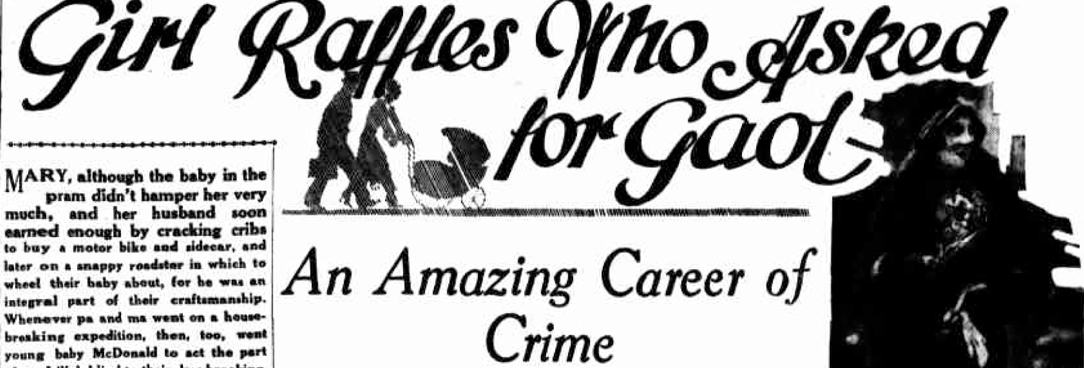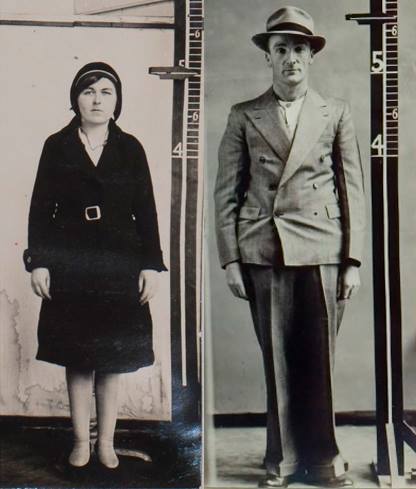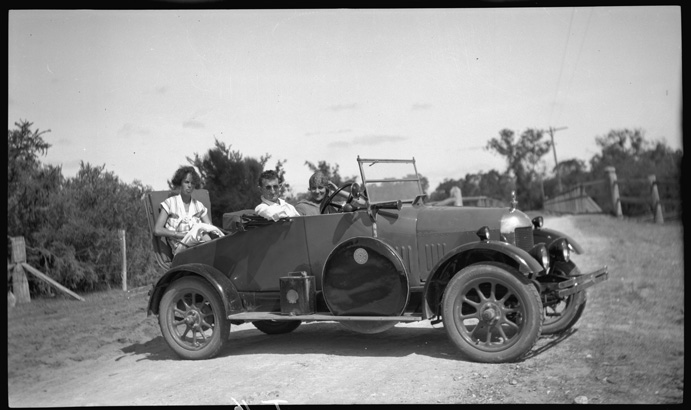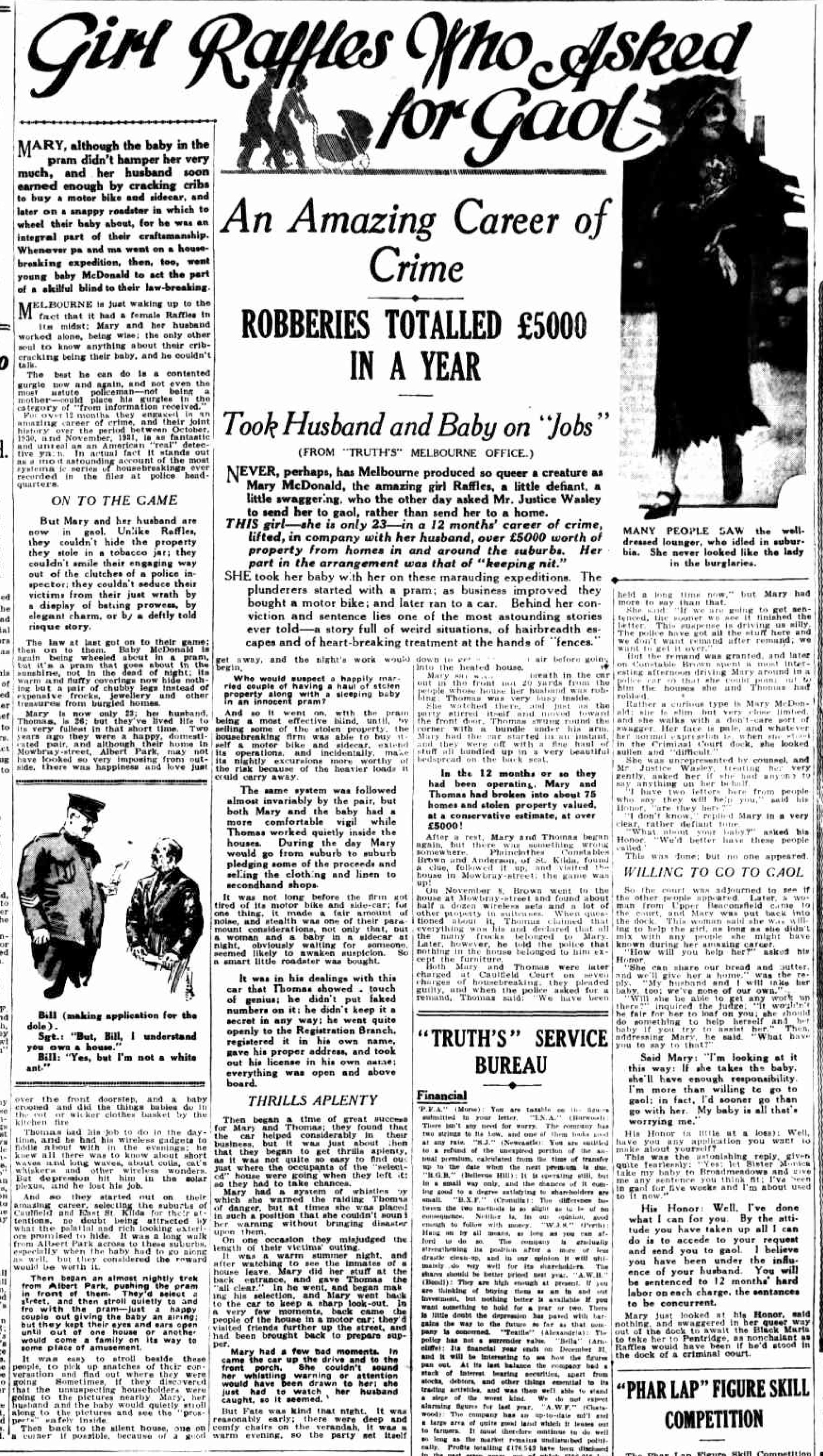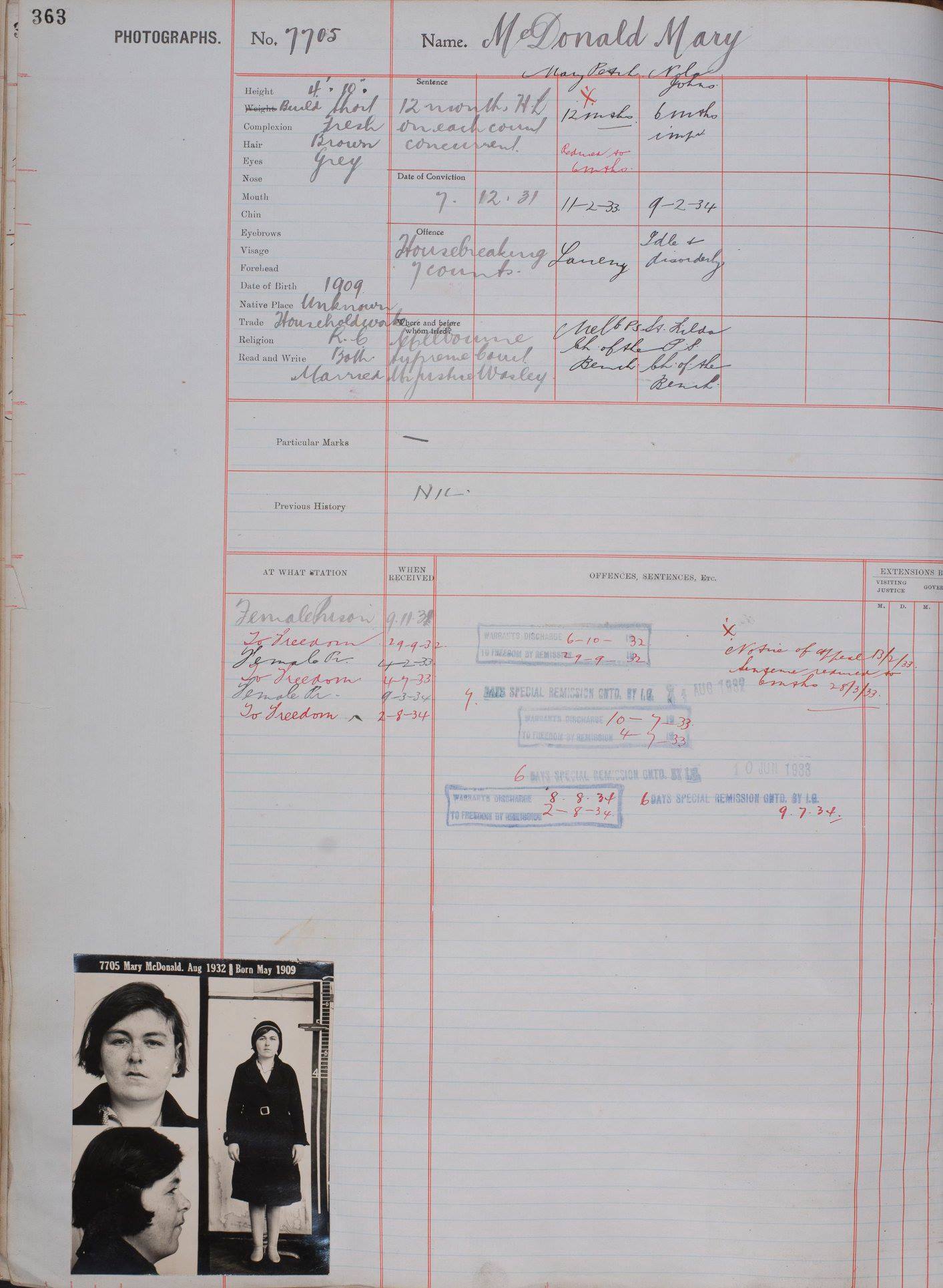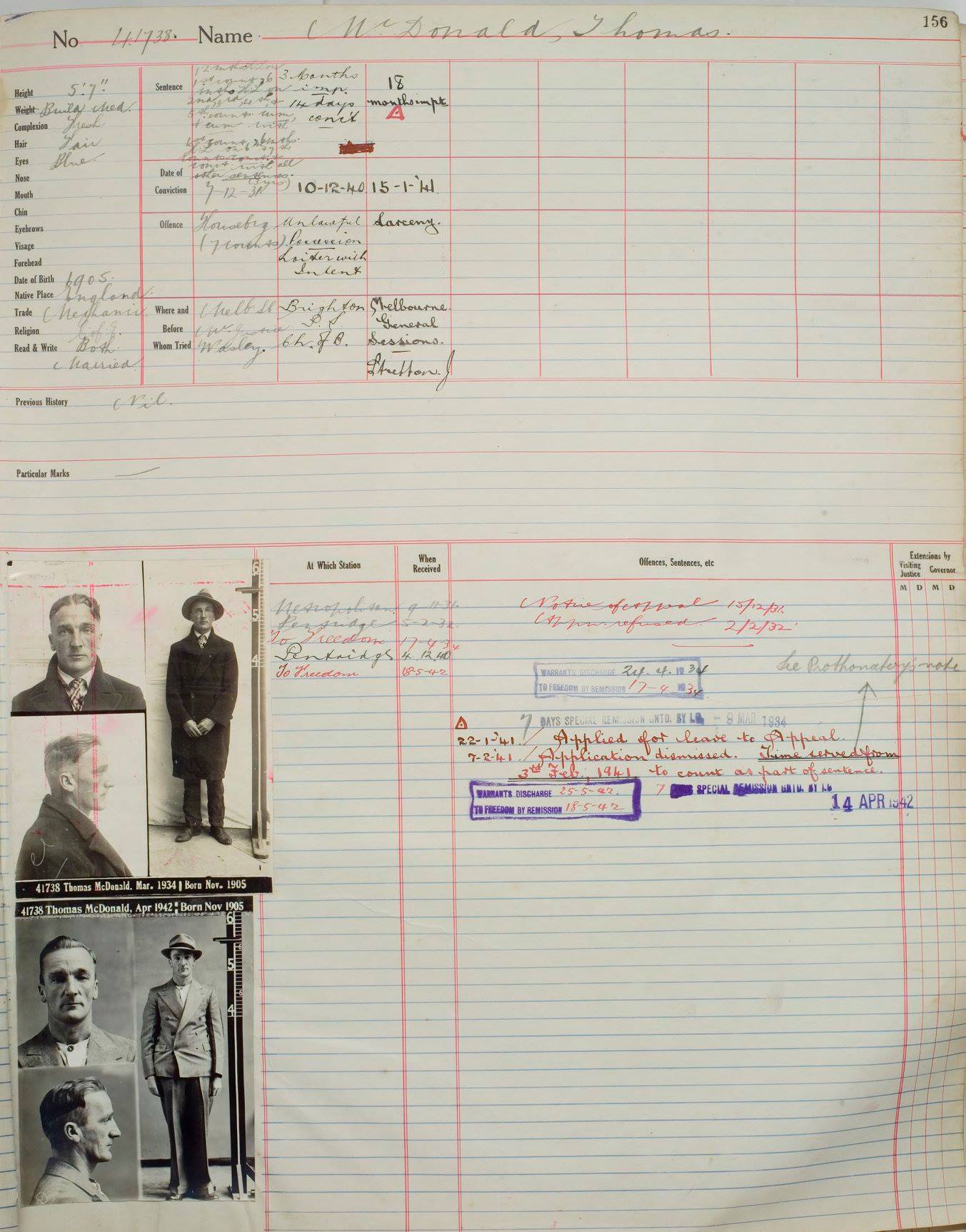
Author: Tara Oldfield
Senior Communications Advisor
Mary and Thomas McDonald were a young couple with a newborn baby living in 14 Moubray Street Albert Park in 1931, the height of the Great Depression. When Thomas lost his job as a mechanic and their baby became ill, times became tough for the young family.
“Up to 12 months ago I was living honestly enough and working. When I became unemployed I was on sustenance and I could not get enough food. We were about to be evicted from the place where we were lodging,” Thomas said at court.
In a statement to the judge, Mary said:
“I have buried one baby son and I could see myself losing this little fellow too unless we did something. People are full of sympathy but when it comes to the point sympathy is not enough to keep the soul in you for a continued fight for existence and that is what it was for us.”
With no way to support themselves and their baby, they embarked on a 13-month housebreaking spree across Caulfield and St Kilda. According to the police report held within the trial brief in our collection, they stole upwards of £5,000 worth of goods from 75 houses across the Bayside suburbs – though the exact value is often contradicted within the trial testimony and in the papers.
1931 crime spree
Each housebreaking expedition went roughly the same way. Thomas and Mary would drive around the suburbs, and once deciding on a house to target, Mary would get out of the car and have a quick look around the outside of the house to make sure no one was around. Then she would wait in the car, keeping watch with the baby, while Thomas broke in and stole whatever he could carry.
“My husband and I at first used a motorcycle and sidecar, but we later got a car. On most occasions we took our baby with us,” Mary said.
Mary would later go to local pawn shops to sell the goods they’d stolen. The rest they kept for themselves – including items detailed by police as wireless sets, suit cases, rugs, fur coats, apparel, blankets, clocks, and pictures.
“To tell you the truth nothing in this house belongs to us except the furniture. I have been out of work and I had my wife and child to keep. In order to live, my wife and I decided to embark on a career of housebreaking about October last year,” Thomas apparently told detectives.
The police detailed in their report that the couple had no source of income and were living solely off the proceeds of their thefts, further, contrary to Thomas’ statement above:
“The furniture in the house occupied by them was on time payment and has been repossessed by the firm from which they were purchasing same.”
The motor car was also repossessed.
“Mrs McDonald has a child aged about 18 months which is at present being cared for by a woman who is known to the police. It is the intention of the police to place this child in a suitable home if the mother receives a sentence.”
In the 1930s it was common for women in trouble with the law to be sent to Abbottsford Convent or Salvation Army for a short time rather than go to prison. Sister Monica from an undisclosed Convent (most likely Abbottsford) testified in court that she would be happy to take Mary and the baby in. Mary refused, preferring gaol.
Both Thomas and Mary were sent to Pentridge, while it appears from the court documents, their baby stayed in the care of friends in Beaconsfield. And so, for their crimes, the couple lost everything. But it seems none of this deterred the pair. After release from prison they changed their last name to Petch and continued with their newfound lives of crime.
1933 shoplifting
In 1933 Mary was caught stealing a dress from a shop. Again, it was reported that Mary was offered the chance to attend the Salvation Army. But Mary preferred to return to prison, which she was now familiar with, rather than enter into a religious institution. As it turned out, she was safer in gaol than out. In January 1934, she made the newspapers again when they reported that a woman from Albert Park by the name of Mary Petch - we are assuming it to be the same Mary - was stabbed in the side by a man. After some time in hospital she was well enough to be in trouble with police again by October 1934.
1934 and 35 possessions
By 1934 Thomas was working as a gardener and he and Mary had moved to Kerferd Road. Police found housebreaking implements in the house in October that year as well as a list of names and addresses and a sketch plan of a South Yarra home. The list included the details of a house that had earlier been broken into. It was reported in The Age that there was insufficient evidence to sustain any charges. Though it was noted Thomas and Mary were both also accused of stealing clothing from a house in St Kilda. It doesn’t appear they went to gaol for these crimes.
However, Mary took on the alias Nola Johns when charged with stealing more women’s clothing the following year. According to her prison register, this was Mary’s last time in gaol. Thomas, however, went onto reoffend into the 1940s.
1940 larceny and receiving
Thomas was back to using his old name in 1940 when, according to his criminal presentment file:
“The Attorney General of our Lord the King presents that Thomas McDonald at Brighton in the said state on the 1st day of December 1940 stole a wireless set the property of Walter George Noonan. And the said Attorney General doth further present that the said Thomas McDonald at Melbourne in the said state between the 31st day of October 1940 and the 7th day in December 1940 received a wireless set the property of Walter George Noonan knowing the same to have been stolen.”
He was again sentenced to time in prison and released in 1942. It appears, through newspaper reports, that the couple were still together at this time and living in South Melbourne, it’s unclear whether their son was with them.
Here’s hoping the 50s were kinder to these two, and that they in turn were kinder to the home owners of the Bayside suburbs of Melbourne!
Sources
- Newspapers found via Trove were used and linked throughout this article.
- Records from PROV’s collection include the couple's 1931 criminal trial brief, VPRS 30 P0 Unit 2430 Item 1018, and Thomas’ 1941 criminal presentments file (for his 1940 crime), VPRS 17020 P3 Unit 8 Item Jan 1941/17.
- Photos of the pair came from Mary and Thomas’ prison registers which can be downloaded by searching their names here.
Material in the Public Record Office Victoria archival collection contains words and descriptions that reflect attitudes and government policies at different times which may be insensitive and upsetting
Aboriginal and Torres Strait Islander Peoples should be aware the collection and website may contain images, voices and names of deceased persons.
PROV provides advice to researchers wishing to access, publish or re-use records about Aboriginal Peoples
